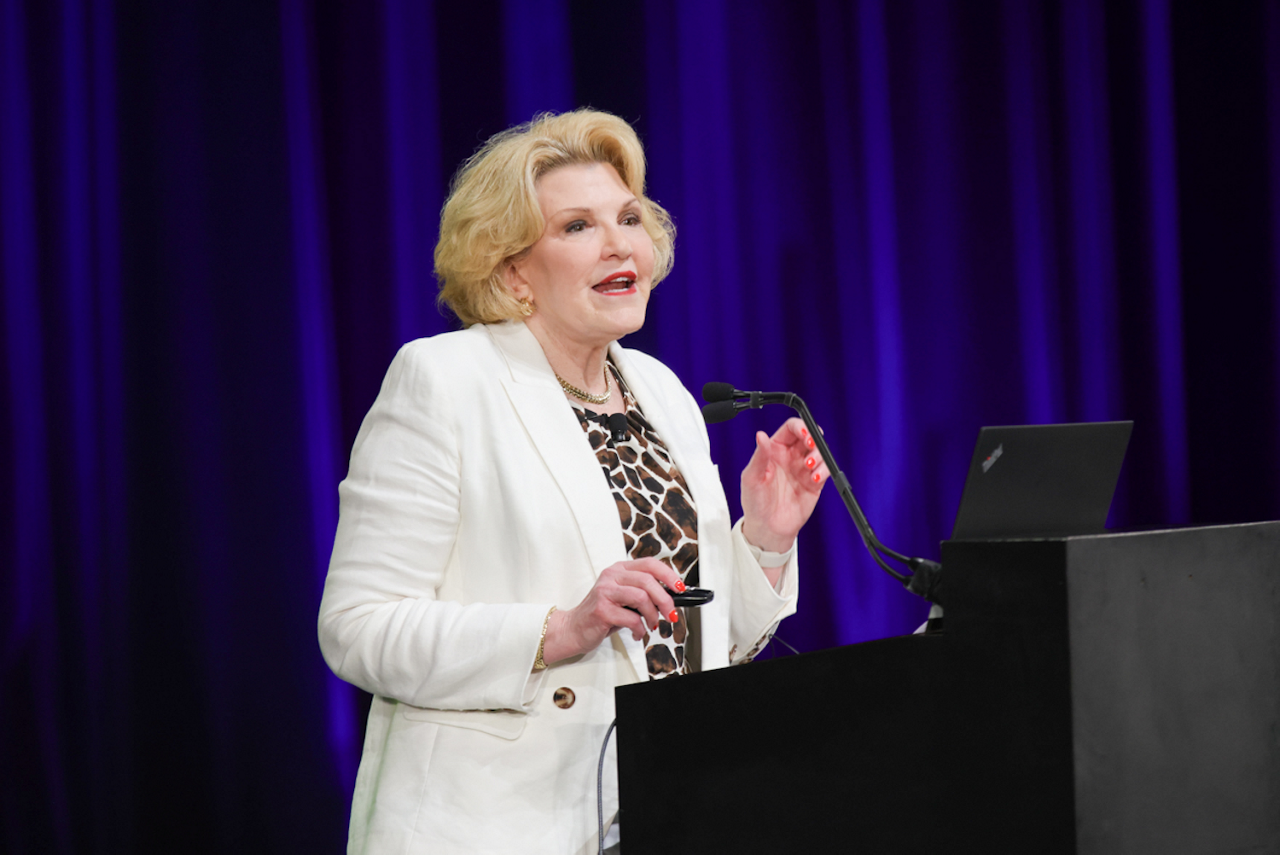From Alignment to Integration: Perspectives on HR Strategy from Executives and Workers
Research + Insights

Having a clearly defined HR strategy is essential for aligning your HR activities with your organization’s overall goals to enhance employee performance and drive business success. To assess the current state of HR strategy—and its organizational impact—SHRM Thought Leadership surveyed 830 U.S. workers in non-HR fields, 320 HR executives, and 64 non-HR executives in October 2024. The research explored the alignment and integration of HR strategy within the business, the importance of full integration for profitability, and the challenges that employers face.
* * *
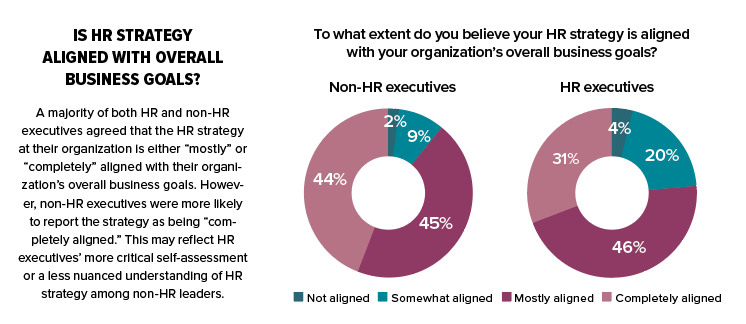
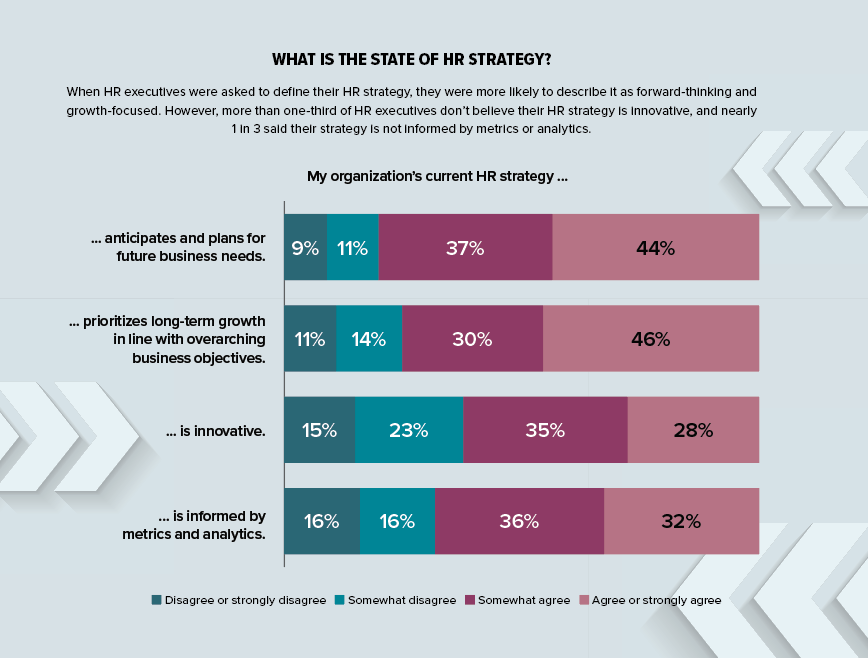
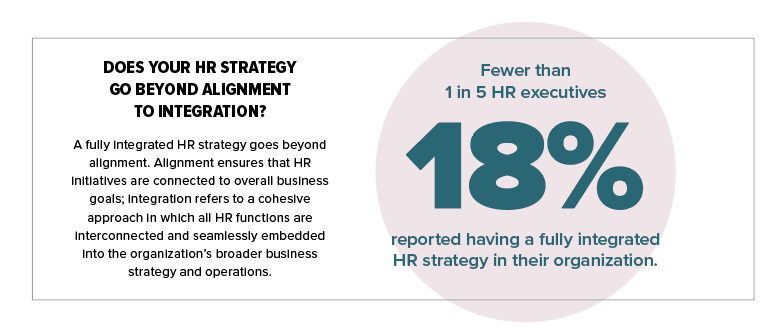



MESSAGE FROM THE RESEARCHERS
Strengthening the CEO-CHRO Partnership: A Critical Step in Transforming HR Strategy
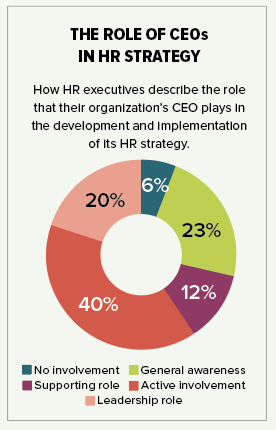
What percentage of your organization’s HR functions are truly embedded into your broader business strategy? If the answer is anything less than full integration, critical opportunities are slipping through the cracks.
HR’s role in today’s business environment isn’t just to align with the broader organization, it’s to be inextricably intertwined with its goals and operations. And yet, only 18% of HR executives reported having achieved full integration of the HR strategy in their organization (see chart above).
The first step toward bridging the gap between missed potential and realized opportunity is the partnership between the CEO and CHRO.
A majority of CEOs are involved in HR strategy. According to a SHRM survey of 320 HR executives, 60% of CEOs either lead or are actively involved in HR strategy development. However, 23% of CEOs provide only minimal oversight of HR strategy, and 6% of CEOs are not involved at all (see chart at left).
When the CEO only maintains general awareness or is uninvolved, only 10% of HR strategies reach full integration. However, when the CEO plays a supporting, active, or leading role, that percentage doubles to 20%.
This isn’t coincidental. Executives have the unique capability to drive alignment across functions, unlock resources, and tackle organizational barriers head-on. Collaboration between CEOs and CHROs won’t guarantee success, but it does significantly increase the likelihood of developing a fully integrated HR strategy.
3 Ways to Build Up the CEO-CHRO Connection
Here are three strategies to strengthen the essential partnership between CEOs and CHROs and create alignment that drives results.
1. Prioritize Bi-Directional Collaboration
An effective CEO-CHRO partnership requires an ongoing dialogue that puts HR at the heart of business discussions. CEOs should view HR as a strategic partner capable of delivering business impact, not just a function that handles compliance and hiring.
Bi-directional collaboration means the CHRO is fully informed about the company’s goals, challenges, and priorities while the CEO gains insights into workforce trends, talent development strategies, and employee sentiment. Create a cadence for this collaboration—quarterly planning sessions, monthly strategy syncs, and real-time check-ins for making key decisions.
2. Navigate Barriers Together
Resource constraints remain one of the biggest hurdles to successful HR strategy integration (see chart above). To overcome this, CEOs and CHROs need to align early about budget priorities and advocate for the investments that HR needs to succeed.
Additionally, CEOs can use their influence to mitigate competing priorities. At the same time, CHROs must rise to the challenge by presenting compelling cases for their resource needs and priorities, driven by return on investment.
3. Keep HR Strategy Business-Centric
One of the biggest culprits of HR strategy failure is misalignment with the business’s overarching goals. For an HR strategy to truly be integrated, it needs to seamlessly fit into the broader business strategy. CEOs must hold their CHROs accountable to ensure that every HR initiative supports key business objectives.
CHROs, in turn, must proactively connect their HR strategy to bottom-
line impact.
Why This Partnership Matters More Than Ever
Building a fully integrated HR strategy isn’t merely an HR initiative, it’s a companywide endeavor that requires intentional companywide collaboration and aligned leadership. The transformation starts with a meaningful conversation between the CEO and CHRO. When these two leaders actively partner, a fully integrated HR strategy becomes more attainable. This partnership drives alignment with business goals, removes barriers to implementation, and establishes a cohesive framework in which all HR functions operate seamlessly across the enterprise. It’s time to move beyond simple HR “alignment” and embrace true integration—because the impact on business success is undeniable.
Ragan Decker, Ph.D., is the manager of EN/ES Research at SHRM.
